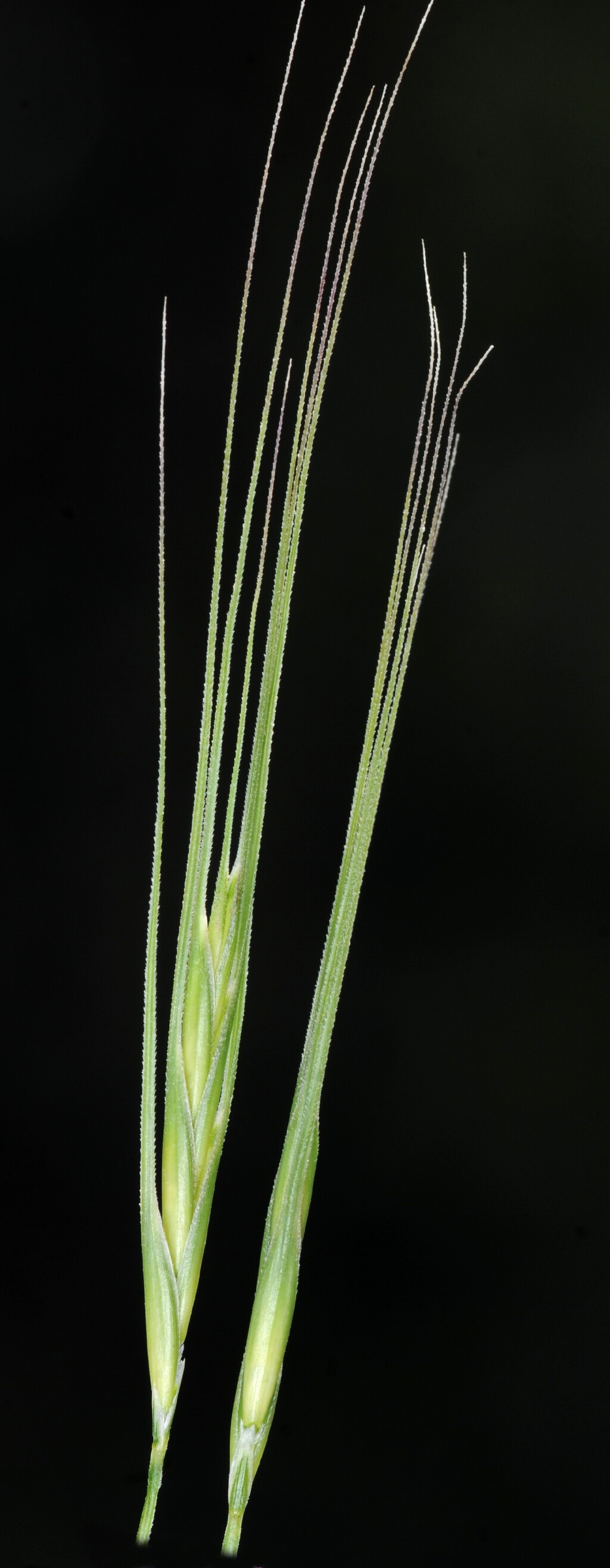Anthosachne scabra
(R.Br.) Nevski Common Wheat-grassWeakly tufted perennial. Culms erect or drooping, to 1.2 m high (rarely to 2 m long or more, and then usually procumbent). Leaves glabrous or hairy; blades flat or inrolled, scabrous at least on the upper surface, 10–30 cm long and 1–4 mm wide; sheath smooth or scabrous; ligule minute, scarious; auricles well-developed, narrow, encircling the culm and often overlapping. Inflorescence a spike of 1–10 spikelets. Spikelets 6–12-flowered, 18–35 mm long (excluding awns); glumes unequal, ovate to acuminate, 1.5–12 mm long, the lower 3-nerved, the upper 3- or 5-nerved, upper 1–5 mm longer than lower; rachilla hairs not covering thickened base of lemma callus; callus thickened at tip, flat or concave on dorsal surface, margins and surface densely hairy; lemma rounded dorsally, smooth or scabrous, oblong or narrow-lanceolate, 7–20 mm long, tapered evenly to a scabrous, flattened awn 9–47 mm long, straight to recurved when dry; palea about equal to body of lemma. Flowers Jul.–Dec.
LoM, MuM, Wim, GleP, Brid, VVP, VRiv, MSB, RobP, MuF, GipP, OtP, WaP, Gold, CVU, GGr, DunT, NIS, EGL, EGU, WPro, HSF, HNF, OtR, Strz, MonT, HFE, VAlp. All States except NT. A common grass especially in drier, rocky areas, comprising a number of more or less distinctive forms. In Victoria, alpine and subalpine forms are commonly highly glaucous.
A distinctive form, known from grasslands north and west of Melbourne has culms that elongate at maturity, sometimes to over 2 m long, and become almost prostrate. No distinct floral or other characters have been detected in this form so it is not known whether formal recognition is appropriate. The genus Connorochloa Barkworth, S.W.L.Jacobs & H.Q.Zhang was erected for a New Zealand segregate of Anthosachne having similarly elongating culms as well as shortly awned glumes.
Walsh, N.G. (1994). Poaceae. In: Walsh, N.G.; Entwisle, T.J., Flora of Victoria Vol. 2, Ferns and Allied Plants, Conifers and Monocotyledons, pp. 356–627. Inkata Press, Melbourne.
 Spinning
Spinning



